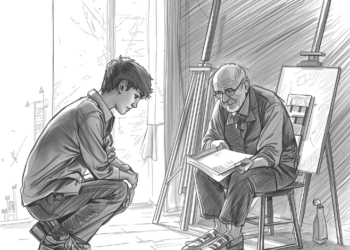Learn how to fix when there is a climate of mistrust employees face with practical steps to rebuild trust and strengthen teamwork.
I still remember one of my first jobs from college. I go to the office every morning, catch my coffee and feel this weird weight in the air. It wasn’t a normal Monday blue – it was something deep. People avoided eye contact, whispered in corners and rarely shared ideas on meetings. First of all, I couldn’t put my finger on it, but after a few weeks it became clear: When the atmosphere of distrust employees doesn’t work differently – they live separately in the workplace.
And let me tell you, this type of environment doesn’t just work. I took that tension home and woke up at night and wondered if I had said the wrong thing, if my manager secretly disliked me, or if the whole team was just a mistake. It eats on you.
This is why this topic means so much. Whether you are a manager, HR professional or an employee just trying to survive in a difficult work culture, it is necessary to understand the dynamics of distrust of productivity, but for the development of mental health, happiness and long-term career.
What does “distrusted” climate mean?
The term sounds dramatic, isn’t it? Just like a seasonal report: “Today’s forecast says for scattered gossip, thunder of doubt and 90% of the experiment.”
But this is not really far from reality.
The atmosphere of mistrust in the workplace occurs when the staff, boss or both stop believing in each other’s intentions. This happens when words do not match actions, when communication feels filter or dishonest, and when people consider the worst rather than the best.
Instead, “We’re Together,” Bhavna “I’m on my own and I see my back better.”
And here’s the kicker: When there is an atmosphere of distrust employees, it notices before the subtle methods – the side, hesitant and the silence where there was collaboration. Then this snowball is something very big.
Ripple effect: How disbelief affects employees
So what really happens when there is an atmosphere of mistrust employees? What I have seen (and painfully experienced), the effect can be cruel on performance, but for the benefit of the people.
- Morality takes a noseive
Do you remember the enthusiastic feeling while starting a new work? The eagerness to be part of learning, contributing and being something big? In an unintelligent environment, this enthusiasm is not just faded – it evaporates.
I once worked with a project, where the management promised openness, but then decided behind the closed doors. Over the course of weeks, the team went for semi -sheets updates from excited mill sessions. Morale fell when no one felt valuable or respect.
- Cooperation breaks
When confidence goes, cooperation is not far behind. If I think my colleague will steal the credit, why would I share an idea? If I’m not sure the benefit will be returned, why should I help?
Teams become silo, people submit information and creative sparks that come from bouncing the surrounding ideas? Went.
- Productivity falls
Let’s be real: Instead of focusing on the focus of mistrust. Employees use emails for other costs, interpret tones or stress about hidden agendas. It’s tired – and it kills productivity.
I once used an e -mail to write an e -mail to make sure it wouldn’t be wrong. Lost working hours, all because I didn’t feel safe.
- Turnover Skyracket
No one wants to live in a toxic environment. Employees are starting to illuminate the CVs, the recruiters suddenly look much more attractive, and before a long time the company stands with high sales. Employees are expensive instead, but the actual cost is the loss of morality between institutional knowledge and those left.
- Stress and increase in burnout
The most scary part? An uninterrupted workplace does not only remain at work. It follows people at home. Night sleepless, stress-related health problems, irritability with family and friends-all these are real results.
Why is there any distrust in the first time?
Now, here is a million dollars concerned: Why does the workplace fall in distrust?
It doesn’t happen overnight. It makes a car like a rust on a car – eat on the basis for a day, for one day it feels all shaken.
Here are some common reasons:
- Poor communication – when employees stay in the dark, the rumors fill the holes.
- Lack of transparency – leaders who make decisions without explanation arouse doubt.
- Broken Promises – Nothing destroys confidence quickly compared to unmatched obligations.
- Bensions – When some employees receive special treatment, the rest of the people feel transmitted.
- Micromanagement – Continuous inspection signal: “I don’t trust you.”
- Previous experience – sometimes distrust of former leaders, politics or mistakes.
And once again, when there is an atmosphere of distrust employees, they do not lose trust in leadership – they lose faith throughout the system. It is a dangerous spiral that is difficult to escape.
How to reconstruct trust in the workplace
Okay, so the picture looks serious – but here’s good news: Trust can be rebuilt.
I lived through it. In a company, after months of stress, a new leader came. Instead of pretending he was restoring everything, he accepted distrust. She said, “I know things are not transparent and I want to change it. I start every Friday by organizing an open question -post session.”
It was simple, but it worked. Over time, people began to talk, began to share ideas and felt they are surrounding.
What can the leaders (and staff) do here:
- Accept the problem
The excuse for distrust is not just present. A simple recognition can open the door for healing.
- Communicate open and often
Openness does not mean to surrender, but it means deciding that deciding, being clear on goals and answering honest questions.
- Match words with tasks
If management says they give significance to the employee’s response, they do better in politics and decisions. Consistency creates reliability.
- Recognize contributions
A real “thank you” or public recognition can lead to a long way to make employees feel valuable.
- Encourage the answer
Create a safe place where employees can express concerns without fear of retaliation.
- Make personal relationships
Confidence does not only live in the boardroom. A coffee division, checking in someone’s weekend or celebrating a birthday can make relationships with human and rebuild bondage.
My personal journey: from distrust to faith
Here is the place where it becomes personal.
During my early career, I honestly thought distrust was just part of working life. I was sure that each workplace was like a political battlefield where you had to see your back. It wasn’t until I joined a team that gives significance to openness and honesty that I realized how different it could be.
For the first time, a leader admitted: “I don’t have all the answers, but I want to be transparent with what I know,” I almost didn’t believe them. But after the week we proved it. Over time, I moved from suspicion to loyalty. And do you know what? My productivity, creativity and job satisfaction affected the sky.
That experience taught me that faith is “not good.” It is the backbone of a healthy workplace.
Practical suggestions for employees living in distrust
Suppose you are not a boss – you are not just an employee trying to survive. What can you do?
- Focus on what you can control – you can’t fix leadership, but you can build faith with peers.
- Documents clearly – keep your work registers to avoid misunderstandings.
- Looking for colleagues creator a microtrust circle with letters that you can trust.
- Communicate clearly – do not feed the rumor mill; Be part of the solution.
- Know your boundaries – sometimes looking healthy steps for a better environment.
Because eventually, when there is a mistrust climate, employees have to decide whether they can affect positive changes or whether it is time to move.
Key Takings:
- Here’s the truth: when there is a climate of mistrust employees suffer, but companies suffer too. Creativity stalls, turnover rises, and even the best strategies fall flat.
- But mistrust isn’t permanent. With honesty, consistent action, and a willingness to face uncomfortable truths, workplaces can rebuild trust. And when that happens, something amazing unfolds, employees don’t just show up; they thrive.
- If you’re in a workplace clouded by mistrust right now, I want you to know this: you’re not alone. Many of us have walked that path, felt that heaviness, and questioned whether work was always going to feel this way. But trust can be restored, and once it is, work stops feeling like survival and starts feeling like possibility again.
Additional Resources:
- How to Build Trust in the Workplace , Gallup: Gallup shares research-backed insights on how leaders can rebuild credibility, foster transparency, and strengthen employee engagement.
- How to Build a High-Trust Workplace , MIT Sloan Review: MIT Sloan explores frameworks and introduces the HX TrustID tool for measuring and improving organizational trust.
- How Leaders Can Regain Trust in Untrusting Times , Wharton: Wharton outlines ten leadership practices that help restore trust and maintain resilience in challenging times.
















